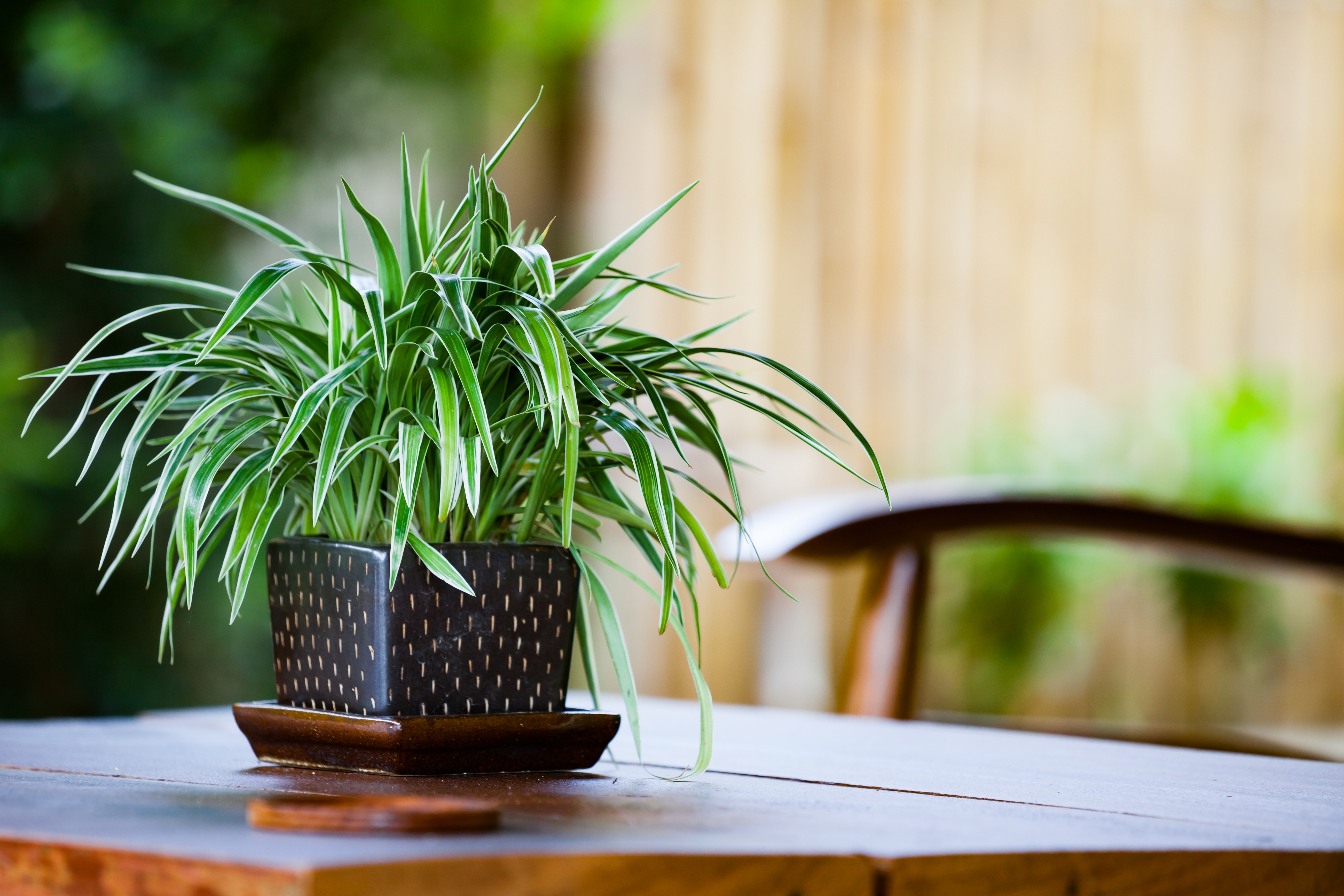Origin
Chlorophytum viridescens , commonly known as a Spider Plant, are an easy-care houseplant that is actually a combination of all other types of Chlorophytum. It's sometimes also called a Hawaiian Spider Plant. Spider plants are native to tropical Africa, although, interestingly, they can also be quite tolerant of colder temperatures.
They get their name from the spider-like way that their leaves fan out, as well as from the tiny 'spiderettes' that mature plants can produce. These hang down from the main plant on long stems. The leaves themselves can also grow quite long and arching, making spider plants an appealing choice to use in hanging baskets.

Other
Spider plants are great air cleaners. They take in atmospheric pollutants, such as carbon monoxide (as is emitted in car fumes), and metabolise them. So, it has been said that having multiple spider plants can help keep the air in your home purified.
It is one of the 29 plant types that NASA has brought to space, where it was used to help clean the air in space stations!
They were a particularly popular houseplant during the Victorian era, with a resurgence in the '60s and '70s which has led to spider plants sometimes being referred to as the 'retro' plant.
Young plants have variegated leaves that then turn green when the plant matures.

How to propagate your Spider plant
The little spiderettes that grow from the main plant make propagation of spider plants super easy, as you can just remove these and then repot them to grow your very own baby spider plant!
Before spiderettes form, you may see your spider plant produce some small white flowers. These can look really pretty, but don't worry when they start to fall off - this is totally normal! If your plant has stored enough energy then a spiderette will then form in the flower's place.